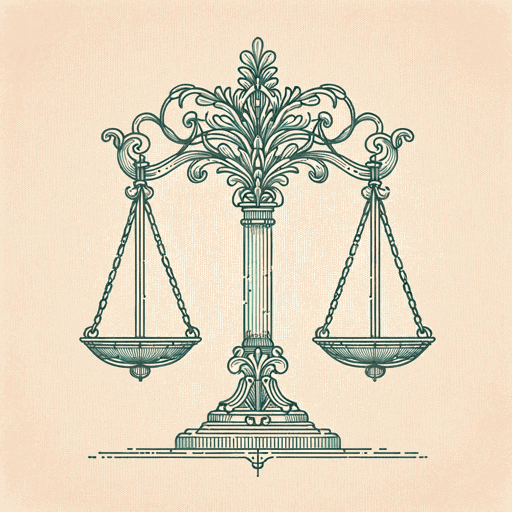43 pages • 1 hour read
Hannah ArendtThe Origins of Totalitarianism
Nonfiction | Book | Adult | Published in 1951A modern alternative to SparkNotes and CliffsNotes, SuperSummary offers high-quality Study Guides with detailed chapter summaries and analysis of major themes, characters, and more.
Summary and Study Guide
Overview
Hannah Arendt’s 1951 The Origins of Totalitarianism is an examination of the origins and ideologies of Nazism and Stalinism in the first half of the 20th century through an examination of antisemitism, imperialism, and totalitarianism. Arendt charts the emergence of the Nazi and Bolshevik totalitarian regimes and how those regimes operated as governments. Arendt asserts that imperialism, not nationalism, created the framework for the success of totalitarian movements, and she claims that totalitarian movements capitalized on the antisemitic and racist ideologies of the age.
Summary
The text is divided into three parts: antisemitism, imperialism, and totalitarianism. A Jewish Holocaust survivor and philosopher, Arendt attempts to understand what led to the powerful success of the Germanic and Russian pan-nationalist movements and, ultimately, the totalitarian regimes which dominated Europe for the first half of the 20th century. Arendt suggests that understanding and examining totalitarian movements helps humanity better understand their causes and prevent their future recurrence.
Part 1 defines antisemitism and outlines its role in totalitarianism. Arendt refutes several claims about the relationship between antisemitism and totalitarianism, asserting that antisemitism preceded totalitarianism, rather arising during it. She details the history of the Jewish people in Europe and the limitations and privileges attached to their distinct status. Arendt argues that the loss of Jewish political influence while maintaining wealth led others to resent the Jewish people. Jews found themselves both sought after and excluded for their heritage.
Arendt asserts that antisemitism is not mere hatred. Rather, it is an ideology that is weaponized by totalitarian movements. European aristocracy aligned itself with conservative religious agendas and perpetuated antisemitic rhetoric to further mobilize the masses against Jews. In turn, nations both required Jews to assimilate while wanting them to maintain separateness. Arendt suggests that all of this led totalitarian movements to intentionally choose antisemitic rhetoric to advance their agendas.
In Part 2, Arendt connects totalitarianism to imperialism and shows the relationship between the bourgeoisie and the rise of totalitarian movements. Seeking capitalistic wealth, the bourgeoisie looked outside of the nation-state. Imperialism allowed the bourgeoisie to rule by bureaucracy in other nations, colonizing them and using terror to further their monetary advancement. Arendt suggests that imperialism paved the way for totalitarianism by showing how antisemitism and racism can be weaponized to exert control, creating a precedent for extending power beyond national borders.
Arendt suggests that these colonies became an education in violence for many Nazi elites, teaching them how to obtain and exert power through bureaucracy and ideology. Continental imperialism led to the pan-movements (i.e., pan-nationalism) which Arendt suggests offered more for Stalin and Hitler’s totalitarian movements than any other historical contributor. Like imperialism, pan-movements operated outside the realm of limited government and emphasized continuous movement and growth. However, the pan-movements differed from imperialism in that they did not necessarily seek capital growth and lacked a sense of overall purpose. Instead, pan-movements were more about a feeling than an agenda, and racism and antisemitism both proved highly effective in convincing others to join the movements.
In Part 3, Arendt examines how totalitarian regimes maintain power once they have achieved their aim of governmental rule. Totalitarian leaders, dependent upon the loyalty of the masses, rule using propaganda and terror. They utilize consistency through fiction to help the masses escape their reality and buy into the ideology the totalitarian ruler is selling. At the same time, totalitarian leaders must avoid stability or normalization, which weakens the structure that upholds the regime.
In the last chapter, Arendt seeks to answer the question of what causes people to buy into the idea of a totalitarian rule and what keeps them there. Ultimately, she determines that loneliness causes the masses to become susceptible to totalitarian influence. Ironically, loneliness is the outcome of totalitarian rule, creating a cycle that leaves people susceptible to totalitarianism.
Related Titles
By Hannah Arendt
Featured Collections
Challenging Authority
View Collection
Class
View Collection
Class
View Collection
Jewish American Literature
View Collection
National Book Awards Winners & Finalists
View Collection
Philosophy, Logic, & Ethics
View Collection
Politics & Government
View Collection
Power
View Collection




